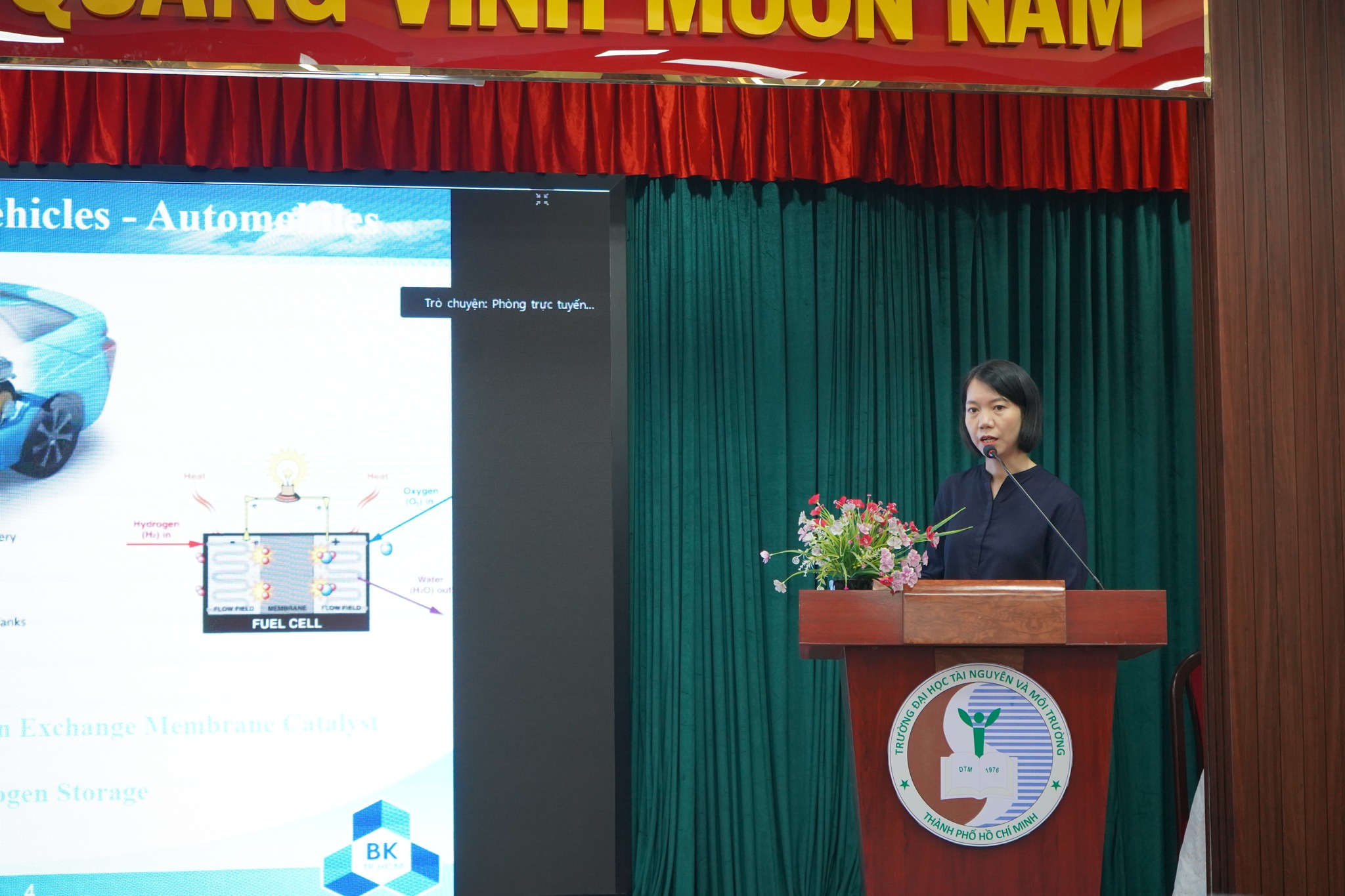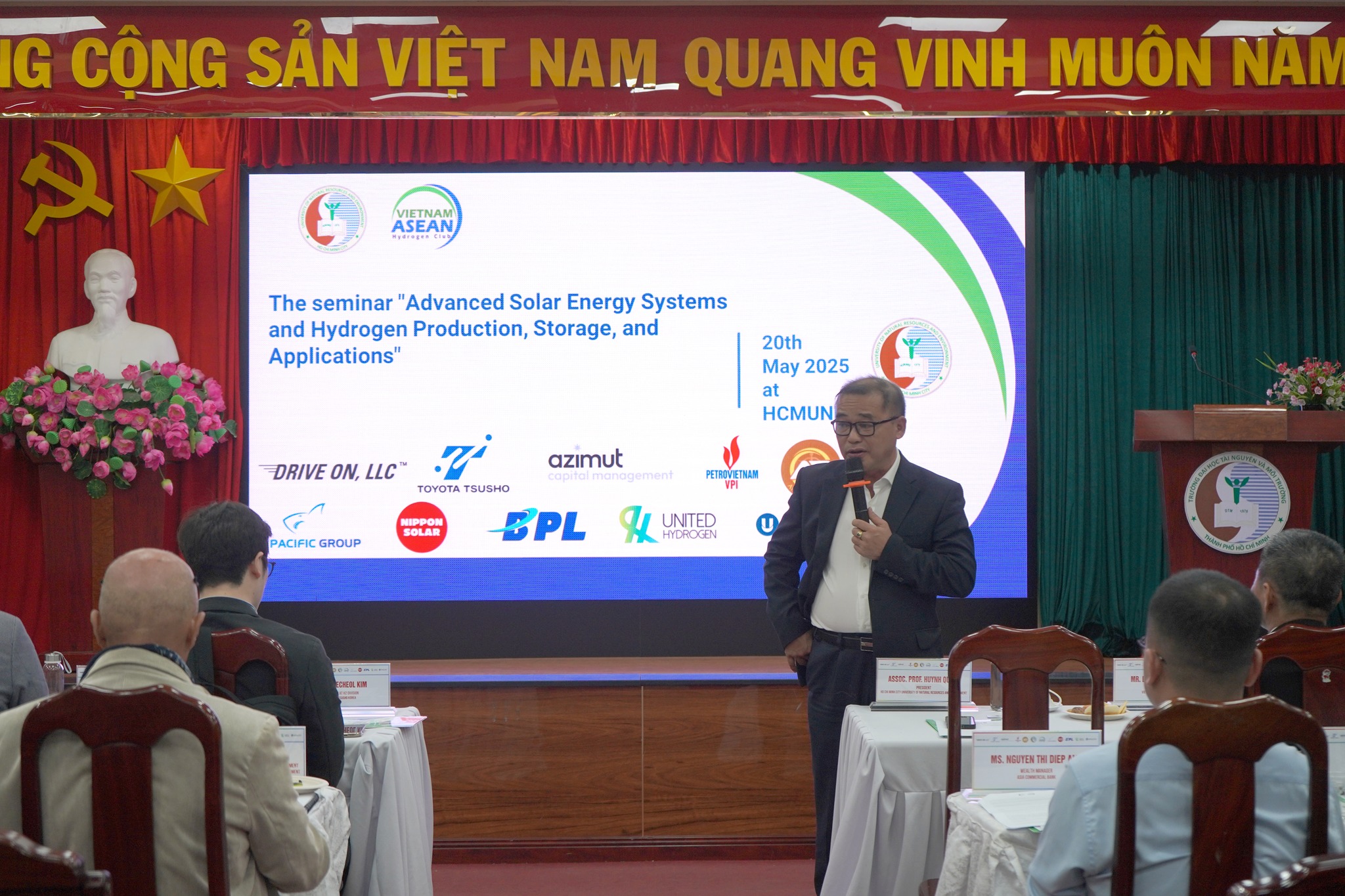Exploring Two-Dimensional Materials for Hydrogen Storage: Vietnam Presents Promising Findings for Fuel Cell Applications
Ho Chi Minh City, July 16, 2025 – At the Vietnam–Korea Hydrogen Workshop co organized by the Vietnam ASEAN Hydrogen Club, HCMC University of Natural Resource and Environment and Korea Hydrogen Fuel Cell Industry Association, Assoc. Prof. Dr. Tran Thi Thu Hanh, from the University of Technology – Vietnam National University, Ho Chi Minh City, delivered an in-depth presentation on the potential of two-dimensional (2D) materials for hydrogen storage—a crucial area of research in support of clean energy and fuel cell technology.

As countries accelerate their transition toward renewable energy, the ability to safely and efficiently store hydrogen has become one of the most critical technological bottlenecks. Dr. Hanh’s research addresses this challenge by investigating the fundamental interactions between hydrogen atoms and a new class of nanomaterials—two-dimensional atomic layers such as graphene, silicon carbide (SiC), and germanene.
The Rise of 2D Materials in Energy Science
Dr. Hanh opened her talk by outlining the scientific breakthroughs that followed the discovery of graphene in 2004. Since then, the family of 2D materials has expanded rapidly, offering highly tunable electrical, chemical, and mechanical properties. Materials such as silicene, SiC, and germanene have attracted attention for their unique honeycomb structures and high surface-to-volume ratios—ideal features for hydrogen adsorption and storage.
Her team’s research focused on evaluating how hydrogen molecules interact with these 2D surfaces and what structural or electronic modifications might enhance their performance.
Advanced Computational Methods and Key Findings
Using a combination of Molecular Dynamics (MD) simulations and Density Functional Theory (DFT) calculations, the study provided atomistic-level insights into the hydrogen adsorption process. These modeling techniques allowed the researchers to determine the most favorable hydrogen binding sites, calculate adsorption energies, analyze structural stability, and evaluate vibrational and electronic properties.
Some of the key findings included:
-
Hydrogen tends to bind strongly at defect sites in the material lattice—particularly divacancies and Stone-Wales defects—which are commonly found or can be introduced during material synthesis.
-
The chair-like configuration emerged as the most energetically stable structure for hydrogenated surfaces.
-
A hydrogen-to-surface atom ratio of 1:1 was achievable for materials like SiC, suggesting high hydrogen storage density.
-
Upon hydrogenation, the band gap of the material significantly increased, which has important implications for the design of semiconductor-integrated fuel cell systems.
The research also extended to twisted bilayer structures of 2D materials at specific angles (e.g., 21.8°, 17.9°), where the interlayer coupling and quantum confinement effects may enhance both mechanical stability and electronic performance.
Implications for Practical Hydrogen Technologies
According to Dr. Hanh, the insights gained from this study have direct implications for the development of advanced hydrogen storage systems, particularly in fuel cell-powered transportation and long-duration energy storage. With proper engineering, these 2D materials could be used as hydrogen-adsorbing membranes in tanks or as active layers in next-generation fuel cell components.
She emphasized that such materials not only offer higher adsorption capacities but also allow for faster charging/discharging cycles, lower operational temperatures, and improved integration with electronic devices—key considerations for commercial hydrogen applications.

Vietnam's Contribution to the Global Clean Energy Challenge
This research was conducted at the Computational Modeling Laboratory of the University of Technology – VNU-HCM, with funding from the Vietnam National University’s Priority Research Program. The presentation was met with great interest from Korean academic and industrial delegates, opening new opportunities for bilateral collaboration in fuel cell and advanced material technologies.
The Vietnam–Korea Hydrogen Workshop 2025 served as a strategic platform for scientists, engineers, and policymakers from both countries to align their visions for a hydrogen-powered future. Dr. Hanh’s contribution not only highlighted Vietnam’s growing research capacity in frontier materials science but also underscored the nation’s readiness to participate in the global hydrogen economy.





